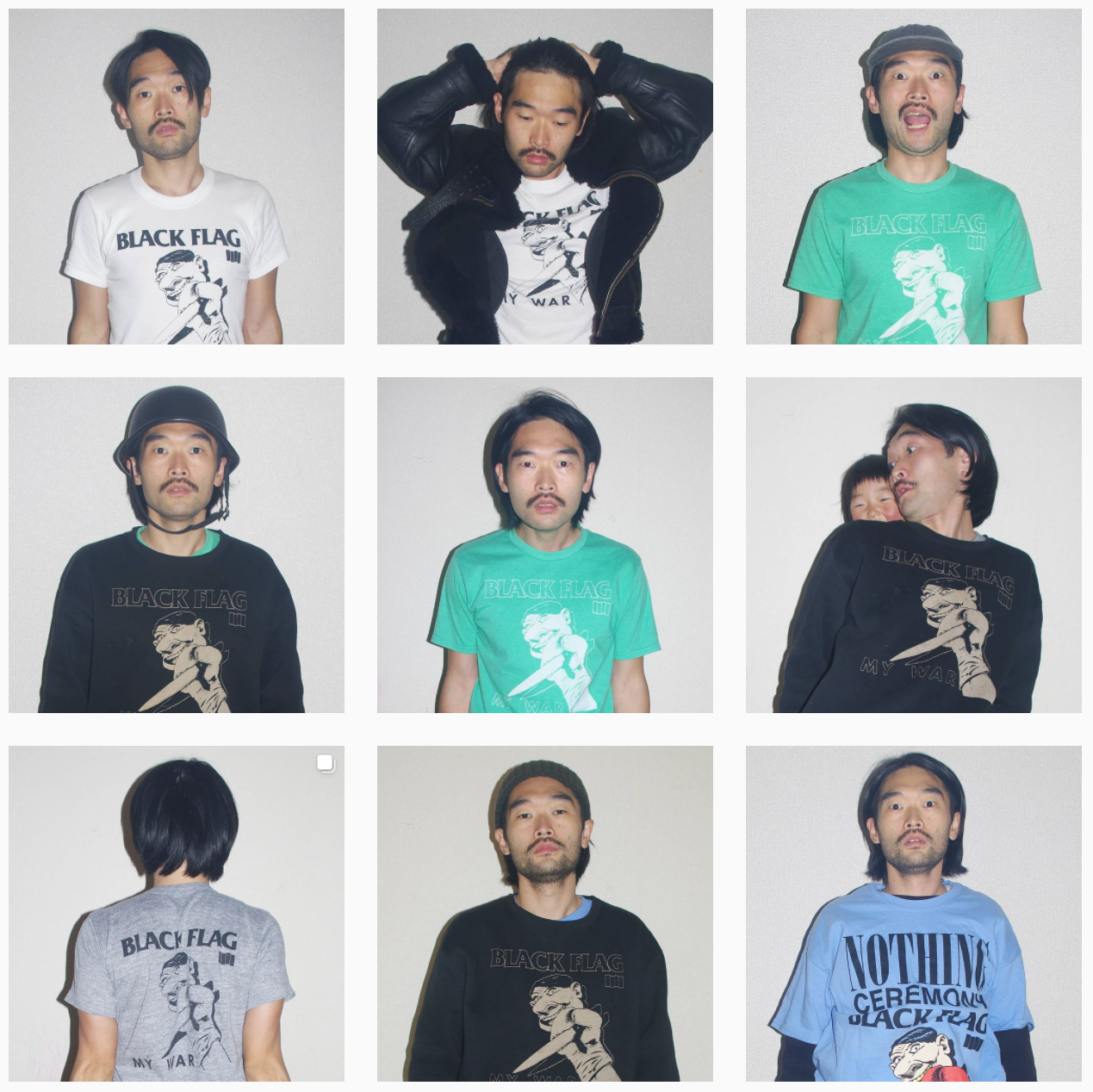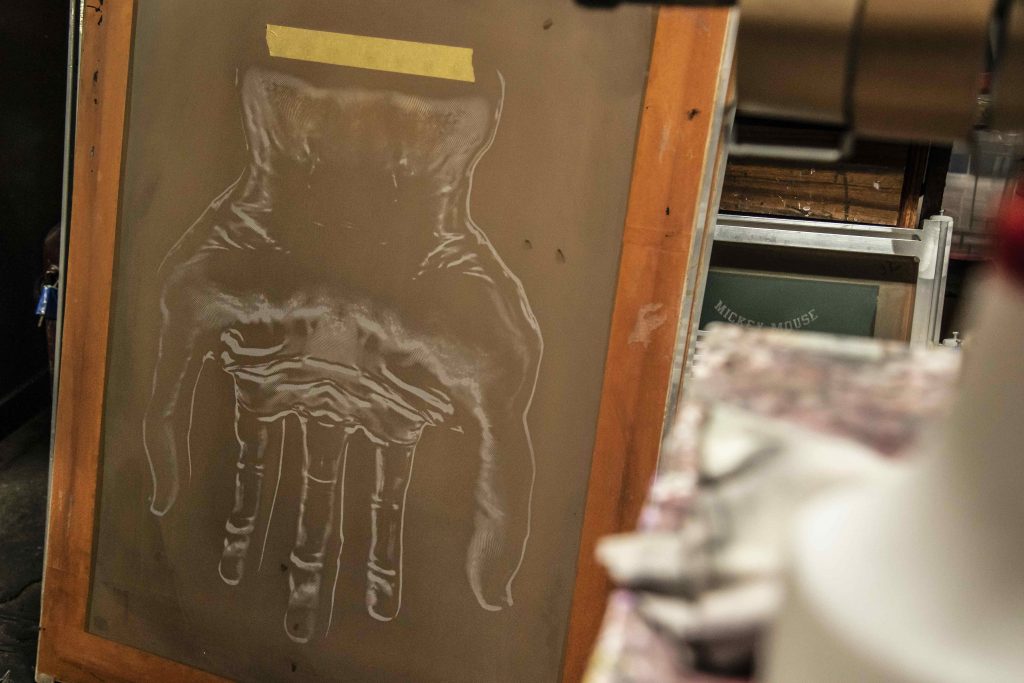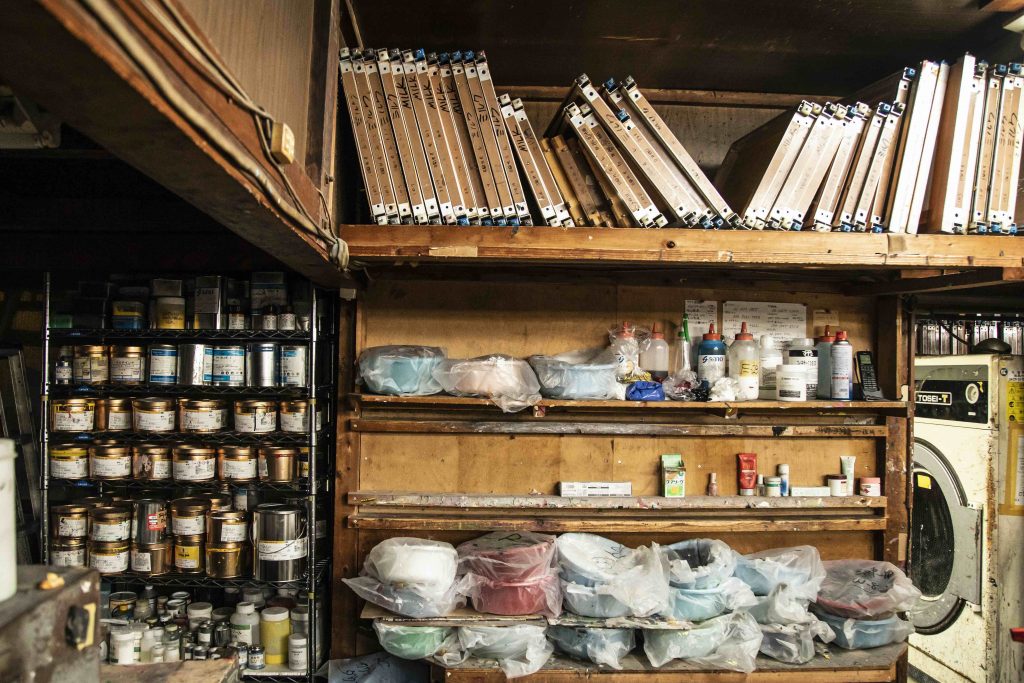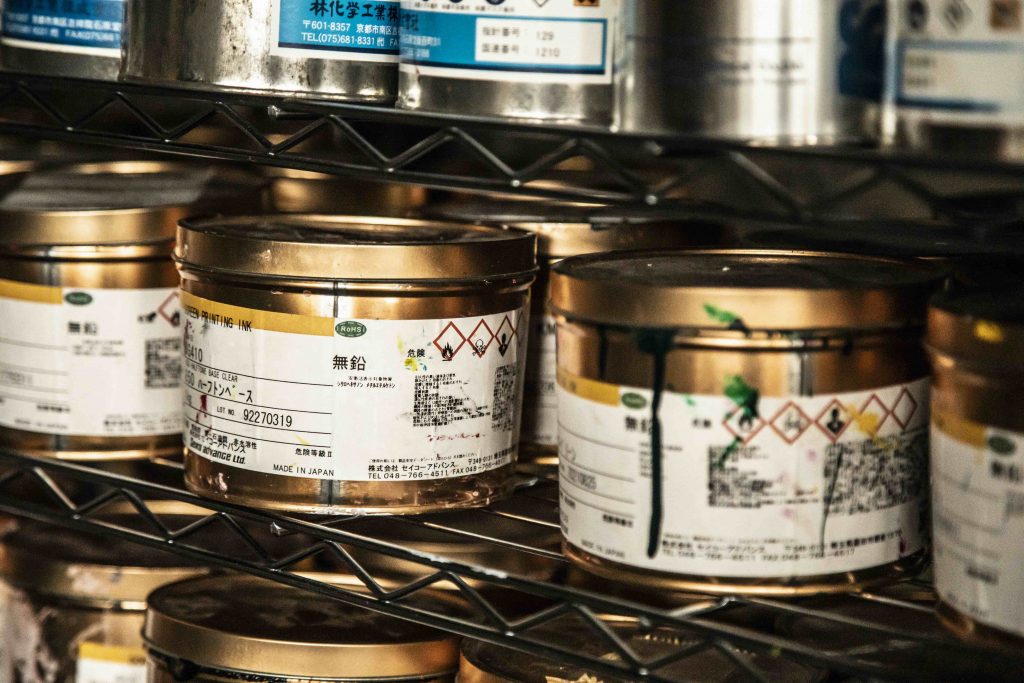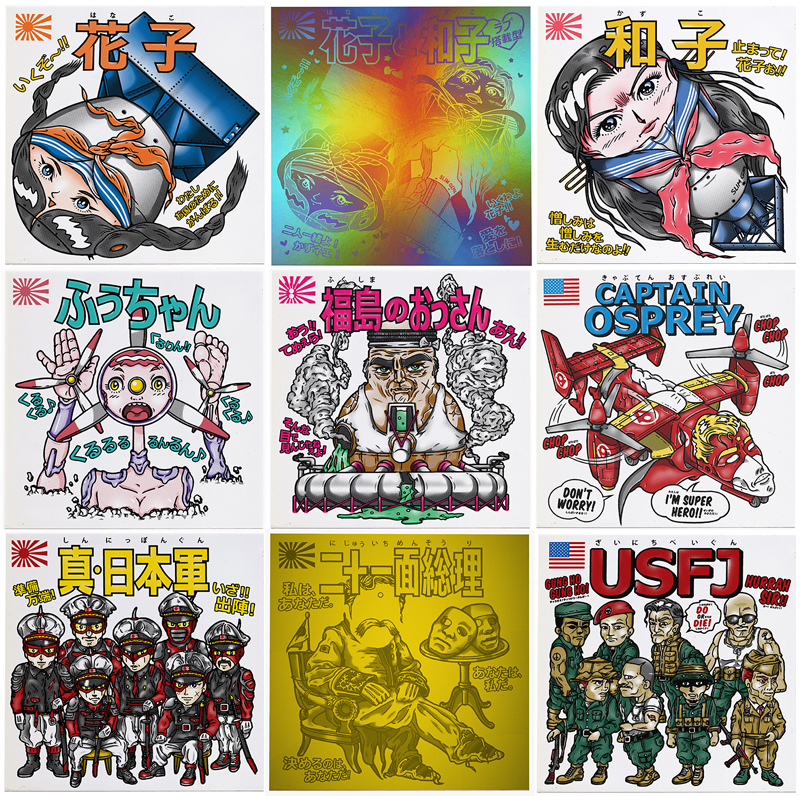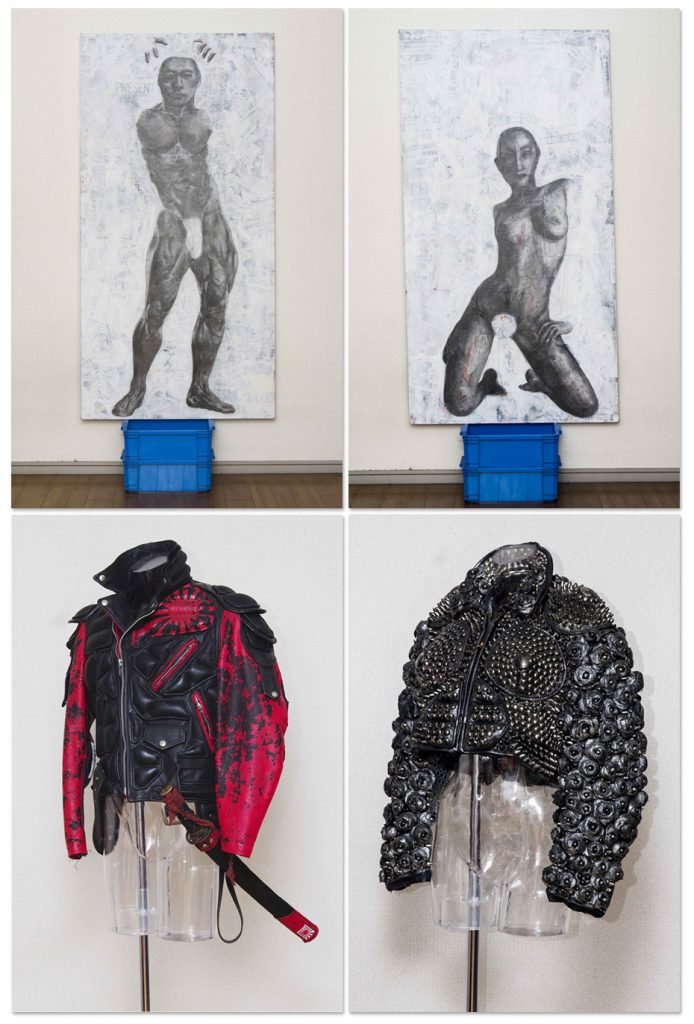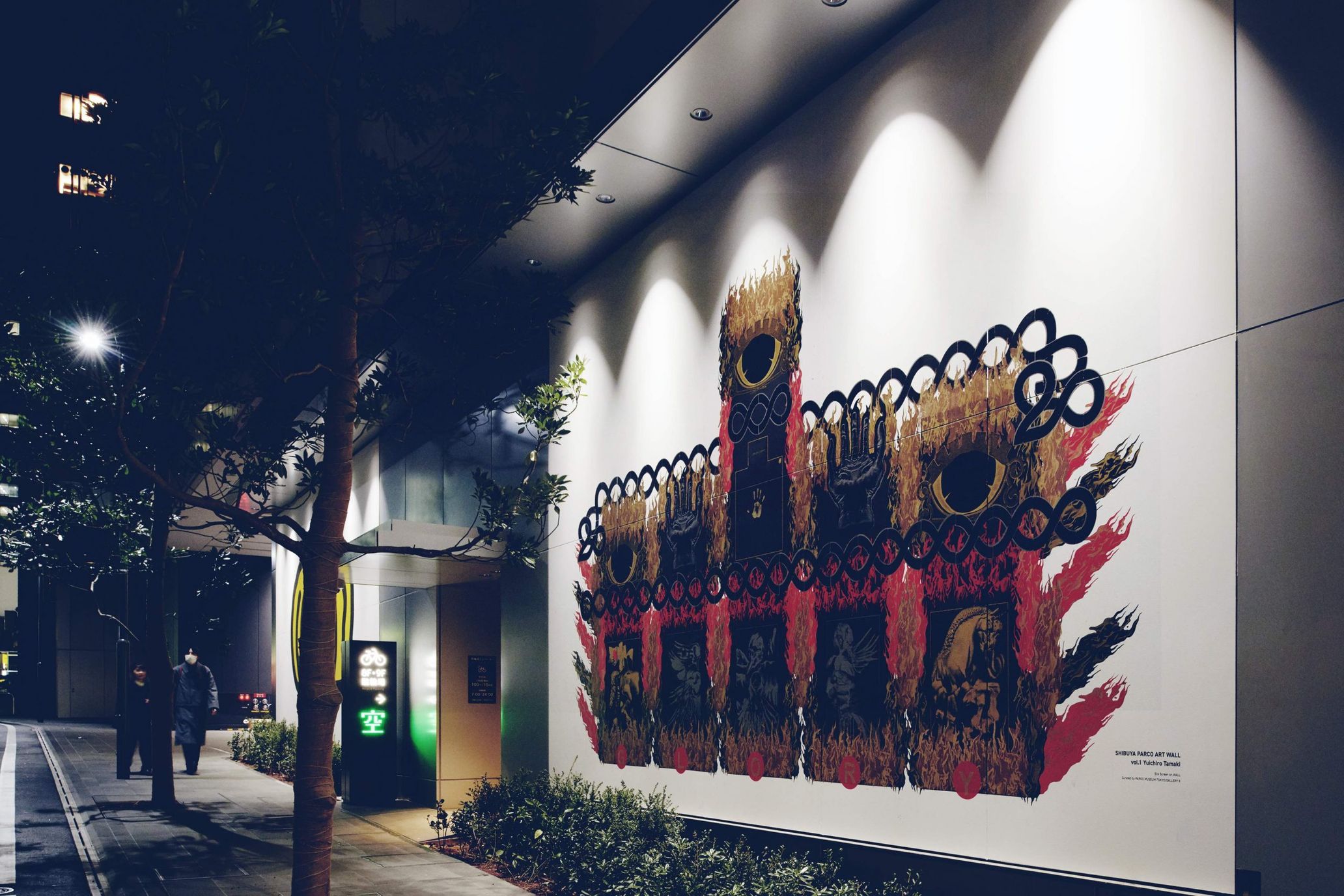Everyone has picked up a band tee at least once, even if they don’t consider themselves as avid music listeners. From popular band shirts to ultra-rare finds, these shirts have always drawn people to them. The endless range of designs is worth noting too — vintage, bootleg, 80s hardcore and metal bands, timeless bands. Among them, Black Flag remains relevant to this day. They paved the way in the independent and alternative scene in the 80s, with Raymond Pettibon crafting their iconic covers. One album differed from the rest, and that was their sophomore album, My War. As the title suggests, they “declared war” on the scene and solidified their sound as hardcore punk with a metal flair. Artist Yuichiro Tamaki screen prints this iconic cover onto different shirts and posts a picture of him wearing one every single day on Instagram. His bio reads: “Wear the ‘MY WAR’ shirt everyday.” Pretty straightforward.
Based on the concept of sending out a political message visually, Tamaki started this project on New Year’s Day, 2015. The monotonous act of posting a photo of himself wearing a My War shirt day after day is his version of war. His project gained traction locally, and in 2017 he released MYWAR_YUICHIRO, a photo book comprising 730 days’ worth of My War outfits. Here, we can check the rules he set out for himself.
Rules:
I) Wear a “MY WAR” shirt every day.
II) Take one photo per day as an evidence.
How to end the project:
I) Lose myself.
II) Die.
It started as plain old fun
“This is ongoing today, but by the time I reached day 730 — so two years since 2015 — I didn’t know the boundary between my daily life and project anymore (laughs). People didn’t use Instagram as a business tool back then, so I posted the photos purely for fun. I got some attention, but I think the followers I have today are the ones that genuinely enjoy what I do. Sure, I wanted my project to reach many people, but at the same time, I didn’t feel comfortable with the idea of being known just for this.”
As his self-portraits of My War gradually turned into conceptual art, he began to have a conundrum as an auteur.
But it wasn’t always like that. To begin with, Tamaki used to create completely different art pieces before this project. A friend told Tamaki that it was unlike him to wear a My War shirt, and that removed the weight off his shoulders. There was no pressure or standard to live up to, and his friend’s word gave him a sense of security. In other words, he was in a good place when he kickstarted the project.
However, he had a lot of people asking him if he was just another breed of influencers. This is a silly question because it’s clear he isn’t. There are rules to his concept, and it’s evident that he is in a constant battle against himself, as seen in his dedication to posting one photo per day. However, there’s only so much one can do to control their image; people were going to see him as “that My War guy,” one way or another. Nevertheless, this project fuels him in other ways. It also doesn’t change the fact that the significance of this project lies in the repetitive act of posting on Instagram: “I tell people that my conceptual art consists of taking self-portraits. In a way, I’m guaranteed to complete one piece of art by taking a photo every day. Plus, I get my job done as a screen printer by wearing a screen printed shirt, even though the designs are bootleg.”
The road to screen printing: from stippling and drawing
Aside from My War, he has created artworks such as “Japanese Card Collection.” For this project, he screen printed a large sticker of Bikkuriman (a random set of stickers included in wafer snacks by the same name) and used Japanese cards, toys, and games as motifs to convey political issues. Further, in “Part One: ‘Save Us, Savior!’ (Tentative Title),” he interpreted right-wing and nationalistic motifs to create a narrative of a man and woman savior. Tamaki designed a jacket covered in small studs, an image of a savior made up of several organs, and more. What can be said about these art pieces is that he takes whatever interests he has seriously and sincerely. It’s only natural that his body of work covers a variety of genres. How did he set off on his journey as an artist in the first place?
“I liked Pushead, so I used to stipple, but I could never complete anything (laughs). The bigger the piece is, the more time it takes. I was exhausted, and I guess I felt my limits. I slowly began to draw normally and stippled only some parts of my work. But the desire to take an easier route was becoming stronger within me, and I ended up doing screen prints.” As someone that likes skating, Tamaki started to want to create shirts. He realized that screen printing would make it simpler for him to come up with his original designs. He continues, “if you want to create gradations through screen prints, you could only achieve that with Halftone or stippling. Because my primary focus is on making screen-printed pieces that look good, I select what visuals to use on my computer, draw that out, transfer the drawing onto data, and then print it analog.”
When asked about his past with stippling, he says that it has no connection to what he does now. He started stippling because he liked Pushead’s work. That’s all there is to it. Ultimately, he can enjoy looking back on his diverse body of work, precisely because of his art’s lack of cohesion. Throughout history, there have been famous painters whose styles changed depending on the period, so it’s difficult to state what exactly is the standard for art. Although those that knew him during his early, darker days were surprised to see “Japanese Card Collection,” he has been acclaimed as an inventor that never does the same thing twice.
“I’ve recently come to think of myself as a craftsman. Here’s what my daily life looks like: work takes up 40%, family takes up 40%, and art takes up 20%. At times, my son’s interests relate to the materials I use. So, my work sometimes turns into my art. I think it’s a good balance. Also, I’m alright with art being my hobby. I don’t want to live fast and hard, and lately, my everyday life motivates me more. I imposed the ‘post every day’ rule on myself because I felt like it was something I could do until I die.”
Discovering the possibilities of live screen print performances through commercial work
For the first installment of Parco Shibuya’s public art project, “Art Wall,” which started in February, Tamaki created a massive art piece. A whopping 3,987mm by 6,294mm.
“It was an honor to be allowed to work on an enormous wall. Last year, Mahito from GEZAN asked me to have a live painting session, and I told him I wanted to screen print live instead. He got on board with the idea, and that’s how it started. I was supposed to do it at Shibuya Zenkaku Festival too, but it got canceled because of the typhoon. Then, Ishimaru-san from a publisher called TANG DENG helped me out. I got to do the live screen printing at ANAGRA in Hanzomon at the end of the same year. It was bigger than the one I did in the summer. Thanks to the event at ANAGRA, I got to partake in Parco’s “Art Wall” and felt like there was a real possibility that my live screen printing performance could turn into my life’s work.
“My screen printing performance, like the My War project, is something only I could do. I felt that good about it. You need to have the proper knowledge about inks and the printing skills to complete several walls. I feel like one can express their attitude towards life by letting others see one’s art process. When I saw the finished product, I got goosebumps, if I may say so myself. The different angles and slight errors give it a hand-printed feel. And it’s the incomplete-ness seen in the ink’s shine and scrape marks that makes it so great. This experience made me see the sheer joy of screen printing once again.”
Working across different genres isn’t just a stylistic choice, and one can say the same thing about each of Tamaki’s projects. His exhibitions change according to his interests and target at the time. It’s also not as if he’s interested in preserving his work either. “It was important for Parco to take down my wall piece. I just have to screen print it again if I wanted to. Sometimes, the process of creating something is more valuable than the complete work itself. The reason I titled the event at ANAGRA “Building” is that I wanted people to visualize something being built in front of their eyes. I’m not against exhibiting pieces that were printed elsewhere. However, I reckon people’s views of screen printing will change once they experience it with music and the sound of the squeegee sliding.”
He has used a diversity of different formats to make his pop yet eerie creations. All of Tamaki’s artworks have his trademark on them, but by comparing his works to each other, one can see that they each have their distinct personalities. It’s been over five years since he waged his own war. The question is: will this evolve into a new method of art?
Yuichiro Tamaki
He is from Tokyo. He screen prints, draws, creates 3D artwork, and does live art performances. A lot of his work is centers on his love for his family.
Website:http://yuichirotamaki.com/
Instagram:https://www.instagram.com/hart_yuichiro/
Twitter:https://mobile.twitter.com/y16omywar
YOUTUBE:www.youtube.com/channel/UCDdYXmV7rBnP37yAVpyH3fw
Translation Lena Grace Suda

